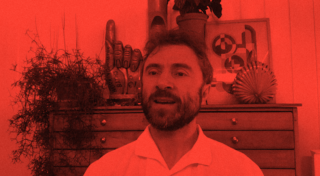Heatherwick Studio
Interview : 1

Grant Gibson [GG]: How has the pandemic effected your practice?
Thomas Heatherwick [TH]: There’s been an unfolding of an extraordinary global tragedy. Luckily in the studio nobody has been touched strongly by the virus and so we’ve been able to adapt and adjust far better than I imagined possible. The trouble with video conferencing is that you become flat half people, you miss all the subliminal clues that allow you to know how someone is by the way they walk up to you before you engage in any kind of conversation. In our team we’ve invested a lot in time and care to create a culture. There’s about 200 of us and we’ve got to really know each other. So the process of being separated means we have relationships we can build on. On video conference we’re sustaining something that we’ve grow together. I think it’s probably different if you’re trying to create fresh connections.
We’ve started new projects over this time; we’ve developed new ideas; and we’ve drawn and sketched together as a team. You don’t know whose line is whose and, as a result, it has acted as a great equaliser for the team. I’m spending much more of my day with a pencil in hand. So there have been some unexpected joys and unexpected benefits.
GG: What initially piqued your interest in Connected?
TH: In our studio we’ve been working increasingly on pieces of city. A year ago a piece of furniture in someone’s house felt an indulgence – we’ve prioritised the public experience that we all share when we go through places. But this crisis has suddenly thrown us into our homes. Workers are spending three months sitting on one chair. Furniture means even more than before and it is part of a collective experience as well as a personal experience. It’s a funny one but now your place of work is a mini-television studio. You’re speaking to the world and what’s behind you and around you is being shared. There’s something beautiful and intimate about that but it’s something that most people haven’t thought through or planned. It has unwrapped people of their insulating layer of professionalism but in a long term way that needs thinking about. So the project just felt very relevant, that notion of working intensely in a home environment.
GG: Interesting. So what can we expect from you?
TH: I’m working on this with two of my colleagues, Stuart Wood and Tom Glover. The three of us feel as if there’s a tool missing in our homes. In a video conferencing moment do we really have what we need around us? In our architectural work we’ve been trying to use craftsmanship, materiality, texture and lots of detail to make places engage the human dimension of ourselves. We’re seeing this as an opportunity to make our work set up be more alive: to nature, to our ideas, and to our imaginations. We’ve become more and more interested in biophilia, which is concerned with engaging all our senses more fully. We’re curious as to whether we can include planting in a piece of furniture that can also wrap around the user.
"The three of us feel as if there’s a tool missing in our homes. In a video conferencing moment do we really have what we need around us?"
GG: What is it you love about timber?
TH: I’ve always loved wood. When I was younger I got to see amazing instrument making and house building and cabinet making. At school it was always accessible. Also it has that biophilic dimension and a sense of real depth aesthetically. People love to touch it when there is excellence in its use – and it’s not just a little skim of veneer stuck on like wallpaper. It smells wonderful too. Wood has so many different qualities if you can use it well, including its ability to capture carbon. What better core material could there be for something like this in people’s homes?
GG: Has the species of timber you’ve been asked to use effected your design?
TH: We’ve spent some time looking at the different timber samples but we’re still at the early stages and haven’t decided yet. First and foremost I’m really happy that we’ll be working with great craftsmanship. We know we have a manufacturer who will make at a level of excellence.
GG: You’ve had a long relationship with Benchmark…
TH: Yes. My relationship with them started when I was a student and had the chance to live in Berkshire and create the second building project I ever did – a 6m high pavilion structure. I used their workshop. So Sean has been like a mentor to me ever since and we’ve kind of grown up together. His love for wood is infectious and we know the set up very well.
GG: How do you judge your own success in something like this?
TH: Success on a project like this is whether it’s possible to add new ideas to an area that has had thousands of ideas in the past. There must be a million designs for desks but the desks that were being designed before didn’t have this particular twist and impetus behind it. I hope it feels relevant to what we’ve learned at this extraordinary time.
